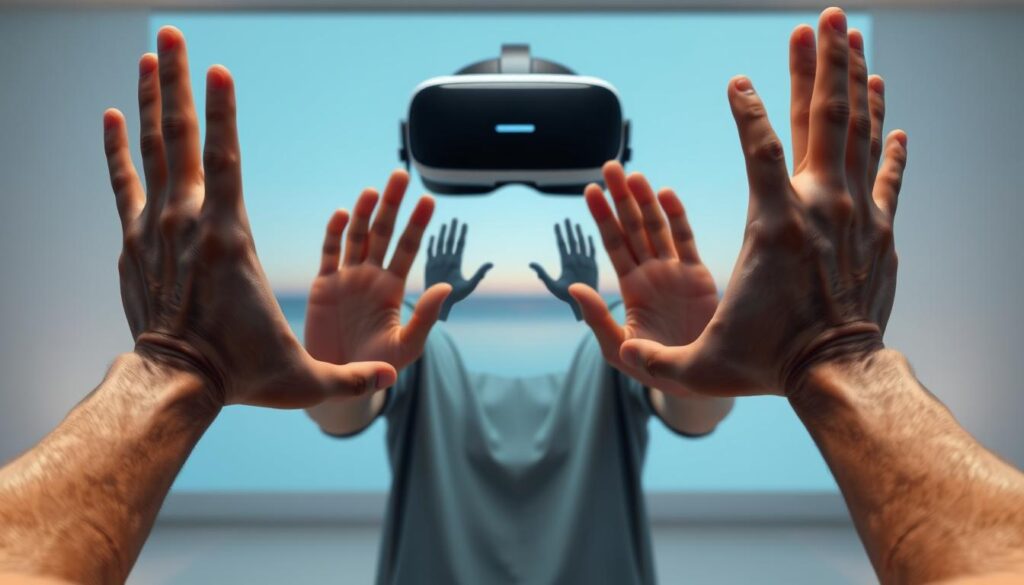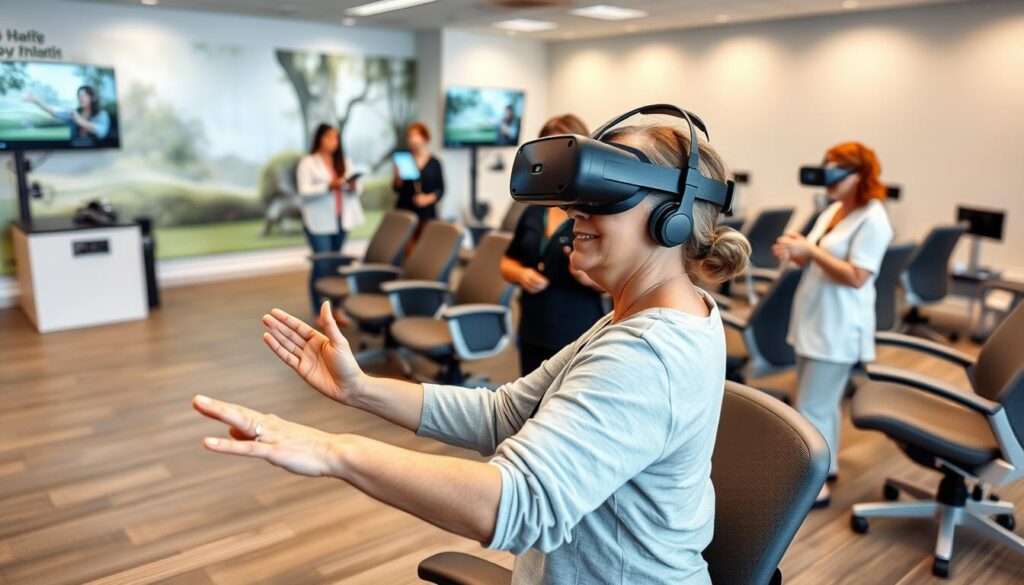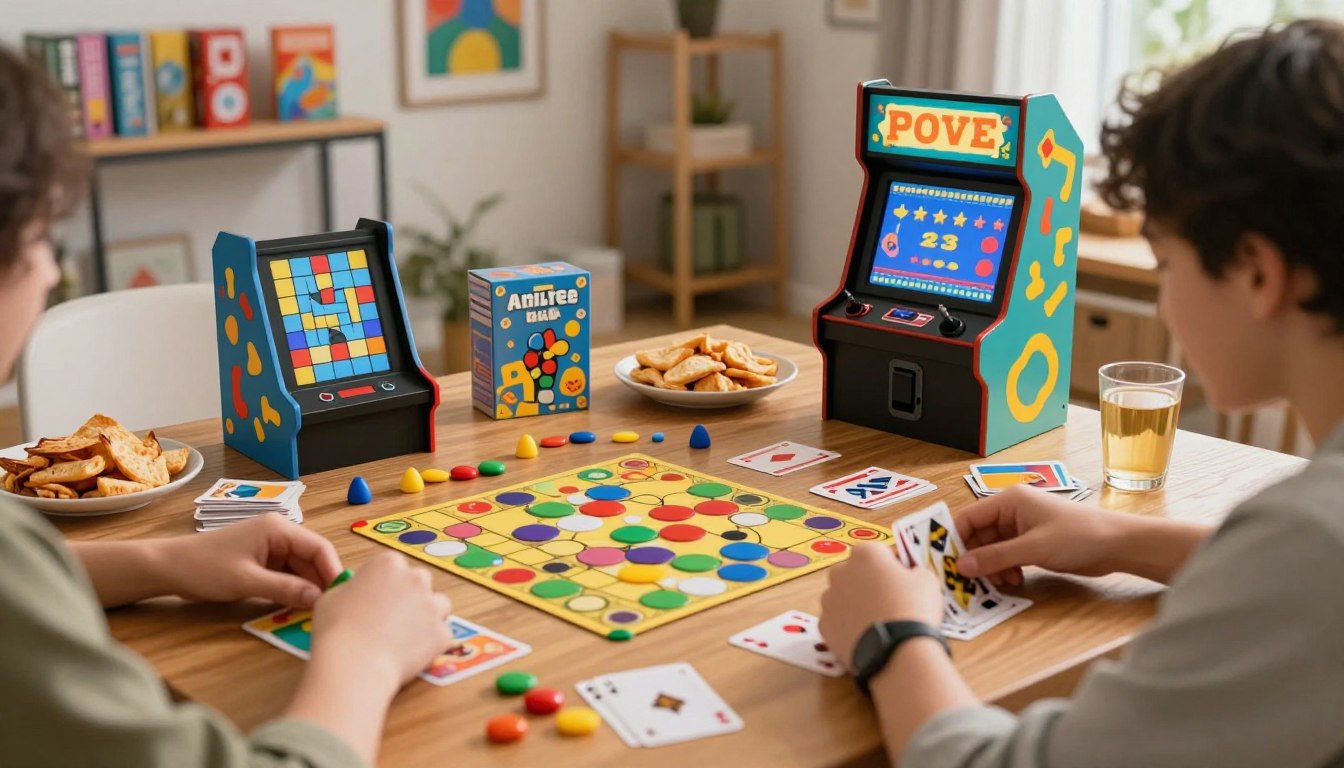Anúncios
Can virtual reality really change the game for stroke survivors? Traditional therapies can be tough to keep patients interested. But VR mirror therapy is a game-changer, blending new tech with tried-and-true methods.
This approach helps patients regain lost motor skills and boosts brain flexibility. It’s making a big difference in how people recover from strokes. Let’s dive into how VR mirror therapy is changing the face of stroke rehab, making it more engaging and effective.
Anúncios
Understanding Stroke Rehabilitation
Stroke rehabilitation is key for stroke survivors to recover. It aims to help them regain their independence and function. Many face big physical and emotional hurdles after a stroke. This makes rehab very important for their recovery and quality of life.
Importance of Rehabilitation for Stroke Survivors
Rehab programs cover many areas, like motor skills and mobility. They also help with emotional health. Through therapy, survivors can get back their confidence and learn daily skills again.
Common Challenges Faced by Stroke Patients
Recovery from a stroke comes with many challenges. Motor issues and emotional problems like anxiety and depression are common. Sticking to a rehab plan for a long time is also hard. But, with the right rehab, survivors can overcome these obstacles and achieve better outcomes.
Anúncios
What is Mirror Therapy?
Mirror therapy is a method used to help people recover from brain injuries, like those after a stroke. It uses a mirror to trick the brain into thinking the paralyzed limb is moving. This helps the brain learn new ways to move, which is key for recovery.
Overview of Traditional Mirror Therapy
In traditional mirror therapy, a mirror is placed between the patient’s limbs. The healthy limb moves in front of the mirror. This makes the brain think the paralyzed limb is moving too.
This trick helps the brain’s motor areas work better. Regular use of mirror therapy can greatly improve daily life and reduce paralysis.
Mechanisms Behind Mirror Therapy Effectiveness
Mirror therapy works because it boosts neuroplasticity. This means the brain can change and adapt, which is crucial for recovery. Seeing the healthy limb move in the mirror activates the brain’s motor areas.
Studies show that regular mirror therapy can lead to better motor skills and daily functions. It’s a powerful tool for rehabilitation.
Technological Advances in Rehabilitation
Virtual reality in medicine is a big step forward in rehab. It changes how therapists help patients, especially those who had strokes. Patients get to dive into their therapy in a new way, which helps their body and mind heal.
Introduction to Virtual Reality in Medicine
Virtual reality lets doctors create special worlds for each patient. These worlds mimic real-life situations, so patients can practice safely. Seeing their progress can really boost their motivation to keep going with therapy.
Benefits of Using Technology in Physical Therapy
Technology in rehab brings lots of good things. For example, therapists can make plans just for each patient. The main perks are:
- Increased Motivation: Fun environments make patients want to get better more.
- Enhanced Engagement: People are more into it when they’re in the action.
- Personalized Therapy Experiences: Plans can change right away based on how the patient is doing.
This new tech opens up big chances for better results in rehab. As it keeps getting better, so will the ways we help people get better.
VR Mirror Therapy for Stroke Rehabilitation
VR mirror therapy is a big step forward in stroke rehab. It enhances traditional therapies by letting patients see and do things in a virtual world. This makes therapy more fun and engaging.
What might seem boring in regular therapy is exciting in VR. This helps patients recover better.
How VR Enhances Traditional Mirror Therapy
Traditional mirror therapy uses a mirror to trick the brain into thinking a paralyzed limb is moving. VR mirror therapy does the same thing but in a virtual world. It’s more interactive and can be tailored to each patient’s needs.
With VR, patients get instant feedback on their progress. This makes them feel accomplished and want to keep practicing.
Immersive Experiences in Rehabilitation Settings
Immersive rehab makes therapy more fun by using all the senses. Patients get to do things that feel like real life. This makes them more eager to participate.
VR makes therapy a dynamic place where patients can try new things. It helps with both physical and mental recovery. VR mirror therapy helps patients feel confident in their movements again.
Evidence Supporting VR Mirror Therapy
Many studies have shown VR mirror therapy works well for stroke patients. These studies give us strong evidence of its benefits. They show that VR helps patients improve their motor skills, which is key for recovery.
Research Findings on Effectiveness
Research backs up VR mirror therapy’s success. Studies show it boosts upper limb function in patients. This shows VR can fill the gap between old and new rehab methods. Plus, it makes patients more motivated, leading to better results.
Case Studies Highlighting Success Stories
Case studies tell of real-life successes with VR mirror therapy. They show how it can greatly improve mobility and independence. These stories highlight VR’s potential to revolutionize rehab and change lives.
vr mirror therapy stroke rehab
Virtual reality is changing how we help stroke survivors regain arm function. This new method makes therapy more fun and effective. Studies show it helps patients move their affected arms better.
Application of VR in Upper Limb Rehabilitation
VR technology is making old therapy methods better. Patients use virtual worlds to practice moving their arms. This helps them build strength and recover faster.
By doing the same tasks over and over, patients can move their arms more easily. This is key to getting better and reaching therapy goals.
Clinical Outcomes Related to Motor Recovery
Studies on VR mirror therapy show great results. Tools like the Fugl-Meyer Assessment show big improvements. This shows VR therapy works well.
It’s important to make therapy fit each patient’s needs. VR is a big step forward in helping people recover from strokes.

Patient Engagement and Motivation
In rehabilitation, especially for stroke survivors, getting patients involved is key. Virtual Reality (VR) brings new ways to keep patients motivated. It turns regular therapy into fun, interactive experiences.
How VR Encourages Active Participation
VR makes exercises exciting by turning them into challenges. Patients explore different worlds that feel like real life. This makes therapy more fun and keeps patients coming back.
Gamification in Rehabilitation Therapy
Gamification therapy uses game elements to keep patients motivated. It lets them set goals, track progress, and win rewards. This approach keeps recovery efforts interesting.
Patients feel a sense of achievement, which boosts their motivation. VR gamification combines fun with meaningful engagement. This helps patients stick to their treatment plans for the long haul.
Comparative Effectiveness of VR vs Traditional Therapy
Recent studies have looked into how VR compares to traditional therapy in stroke rehab. They found VR can lead to better outcomes. This shows a new path for recovery.
VR technology changes the way patients work on their rehab. It makes them more engaged and helps them recover faster.
Findings from Recent Clinical Trials
Clinical trials have shown VR mirror therapy is effective. They found patients using VR therapy recover motor skills better than those with traditional methods. These studies show VR has an edge in improving physical function and rehab progress.
Patient Satisfaction and Experience Metrics
Patient happiness is key in rehab success. Surveys show VR therapy makes patients happier. They enjoy therapy more because VR is immersive and fun.
This shows how new therapy methods can improve rehab. It highlights the importance of using innovative approaches.
Implementation of VR Mirror Therapy
Starting VR mirror therapy in rehab needs a careful plan. It must consider tech and human sides. The setup is key for therapy success. Choosing the right VR systems makes a big difference.
Setting Up VR Systems for Rehabilitation
Setting up a VR system for rehab includes several steps:
- Choosing the right VR hardware and software for therapy.
- Creating enough space for safe and fun therapy sessions.
- Using easy-to-use interfaces for both therapists and patients.
Training Therapists and Patients
Training therapists is crucial for VR therapy success. They need to learn:
- About VR tech and how it’s used in therapy.
- How to help patients through VR therapy.
- How to check on patients and get their feedback.
Patients also need special training to feel comfortable with VR. Personalized help boosts their confidence and therapy success.

Challenges and Considerations in VR Mirror Therapy
VR mirror therapy shows great promise in helping stroke patients. Yet, there are challenges to overcome. It’s important to focus on making treatments safe and comfortable for patients.
Potential Limitations of VR Applications
Using VR in therapy can face some hurdles. Not every place can afford the latest VR tech. This means some patients might not get to try it.
Also, some people might feel sick or uncomfortable during VR sessions. Finding ways to overcome these issues can make VR therapy better for everyone.
Addressing Patient Comfort and Safety
Keeping patients safe is a top priority in therapy. It’s key to check how each patient feels about using VR. This helps make sure they’re comfortable and safe.
Having a safe space for patients is crucial. It helps them enjoy VR therapy more. This focus on safety and comfort is essential for successful therapy.
Future Perspectives in Stroke Rehabilitation
The world of stroke rehabilitation is about to change a lot. New technologies are coming that will make patient care better. These changes will help stroke survivors get better faster.
One big change is the use of virtual reality (VR) in therapy. VR makes rehab more fun and effective. It lets doctors create plans that fit each patient’s needs.
Emerging Technologies in VR Rehabilitation
VR is getting better and better. It now offers deep, engaging therapy sessions. With new tools and AI, therapy plans can be made just for you.
This means patients can interact more and see how they’re doing right away. It helps doctors know if the therapy is working.
Long-term Goals for Stroke Recovery Programs
As VR gets better, so will stroke recovery programs. The main goals will be to help patients move better, coordinate, and live more independently. VR will make therapy more effective and focused on the patient.
Conclusion
Virtual reality (VR) is changing how we help people recover from strokes. It mixes new tech with old ways of therapy, like mirror therapy. This makes therapy better and more fun for patients.
Studies show VR can really help people get better faster. It makes therapy more exciting and helps patients want to do more. This is a big step forward in helping people recover from strokes.
VR is getting better all the time, and that’s good news for stroke recovery. As we learn more about it, VR will keep making therapy better. It’s going to help a lot of people recover from strokes and make their journey easier.




